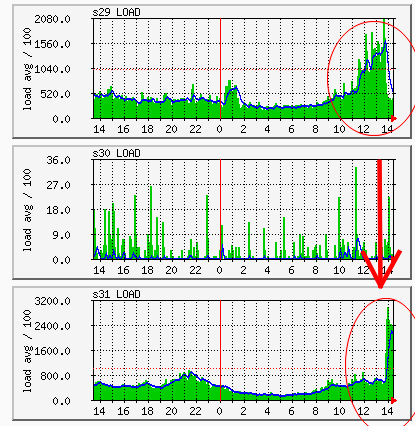Serving high traffic websites - VIP hosting
Why can my website overload my provider's server?
There comes a time in the operation of any high-traffic website when the website is no longer suitable for serving a normal shared web hosting environment. On a hosting server, the provider usually hosts hundreds of websites with average traffic, which share the server's resources proportionally, so that all websites with average traffic can be accessed quickly and smoothly. If a website on such a server has a spike in traffic, it diverts resources away from the other websites, and the websites with many average visitors and the website with the spike will slow each other down.. Therefore, high traffic websites cannot be hosted reliably on traditional servers with hundreds of users, because there will not be enough resources to serve the high traffic website during peak traffic periods.
Solution: move the website to VIP hosting
Each VIP user has their own dedicated VPS container and IP address, resulting in significantly more resources on the server to serve a website, so that the availability of a high-traffic website remains stable and fast even during peak traffic periods.
Frequently asked questions
How many visitors can I have on a "normal" hosting?
There is no clear answer to this question as it depends on the resource used per visitor to the website. A website that does not run a programcode can serve up to 20,000 visitors on a shared server, while a high-traffic online store with lots of products can easily be forced to use VIP hosting with 2-3,000 daily visitors. It also depends to a large extent on the structure, size and indexing of the database. In many cases, poorly written program code results in resource sprawl.
How can you measure how much resource a hosting consumes? Are there any statistics on this?
The resource consumption of a repository cannot be measured by direct means, there is no metric, and statistics cannot be compiled or can only be partially compiled. The reason is that overload can be caused by several components: CPU overusage due to program execution, MySQL queries, I/O load, excessive memory usage, etc. Different resource types do not have comparable metrics and measurement methods, so the consumption of a hosting resource is usually determined using indirect testing tools.
The measurement involves moving the website to an empty test server with no downtime and determining how much the average load on the original server is reduced and how much load the website generated on the empty test server. The actual magnitude and type of load is then estimated from changes in 5 different environmental characteristics (CPU, MySQL, external and internal I/O usage, memory usage) by our our engineers. Usually, if the variation between the two servers exceeds 10%, we will propose VIP hosting.
An example of such testing. The graph below shows that after the website was moved, the load on the original server (s29) decreased significantly, while the load on the test server (s31) increased.

What happens if my high traffic website runs out of VIP resources?
In this case, we recommend renting your own server. With our skilled hosting engineering team, technical tools and know-how, we can host any website with any number of visitors.
If you have any further questions, please do not hesitate to contact our Customer Service!


